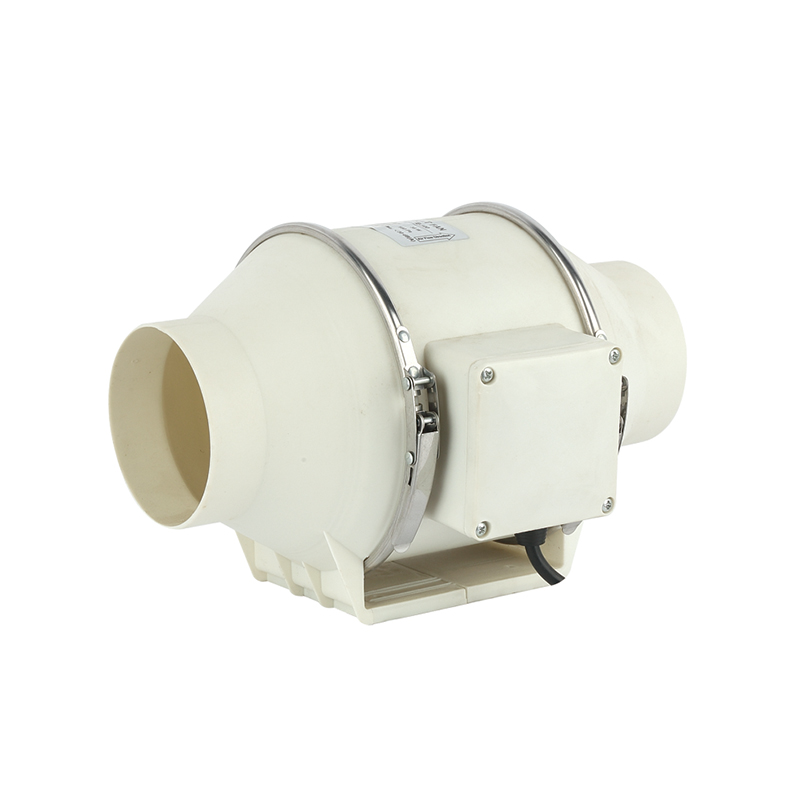Qinlang focuses on providing high-quality products and considerate services, and is committed to meeting every expectation of our customers.
The DKT-133 Cooling Ventilation Double Inlet Air Conditioning Fan is d...
See DetailsIn the quest for a peaceful night's sleep, noise pollution is a common enemy. This is particularly true for those living in urban environments or spaces where external noise is a constant issue. The solution often lies within the home itself, where quiet inline duct fans, silent inline duct fans, and quiet inline duct booster fans can play a pivotal role in maintaining a tranquil atmosphere. Here's how to discern the right fan for your nocturnal ventilation needs.

Understanding the Importance of Silence
When it comes to nighttime use, a fan's noise output is paramount. Quiet inline duct fans are engineered to operate with minimal disturbance, ensuring that the hum of ventilation systems does not disrupt rest. Silent inline duct fans, with their advanced noise reduction technologies, are ideal for bedrooms, home offices, and any space where quiet operation is crucial. The goal is to maintain a comfortable environment without the intrusion of fan noise, which is where quiet inline duct booster fans excel with their whisper-quiet performance.
Evaluating Fan Efficiency and Noise Levels
step in choosing a quiet inline duct fan is to evaluate its efficiency and noise levels. Manufacturers often provide decibel (dB) ratings, which indicate the noise level of the fan. Generally, a lower dB rating signifies a quieter operation. For nighttime use, aim for silent inline duct fans with a dB rating below 30, as these are less likely to be noticeable in a quiet environment. Quiet inline duct booster fans, despite their higher power, are designed with noise reduction in mind and often fall within this range.
Considering the Fan's Motor and Blade Design
The motor and blade design significantly impact the noise produced by a fan. High-quality motors in quiet inline duct fans are built to run smoothly and quietly, reducing friction and vibration. Similarly, the shape and material of the blades in silent inline duct fans can affect noise output. Aerodynamic blades made from lightweight materials are less likely to create noise as they cut through the air. When looking for a quiet inline duct booster fan, consider these factors to ensure the fan operates quietly without sacrificing performance.
Matching Fan Size to Space Requirements
Selecting the appropriate size is crucial for both performance and noise management. An oversized quiet inline duct fan may create unnecessary noise, while an undersized one may struggle to maintain adequate airflow. It's essential to match the fan's capacity to the space it's intended for. Silent inline duct fans come in various sizes, and choosing the right one involves calculating the cubic feet per minute (CFM) needed for the space. Quiet inline duct booster fans, despite their power, should also be sized appropriately to avoid excessive noise.
Energy Efficiency and Variable Speed Options
Energy efficiency is another factor to consider when choosing a quiet inline duct fan. Fans with Energy Star certification or similar ratings are designed to consume less power while maintaining performance. Silent inline duct fans with variable speed options allow you to adjust the fan's speed according to the needs of the space, which can also help in reducing noise levels. Quiet inline duct booster fans often feature variable speed controls, providing flexibility and ensuring quiet operation at lower settings.
Integration with Smart Home Systems
In today's technology-driven world, integrating your quiet inline duct fan with a smart home system can offer additional benefits. Smart silent inline duct fans can be programmed to operate at specific times or in response to certain conditions, such as high CO2 levels or temperature fluctuations. This not only enhances the comfort of your space but also ensures that the fan operates quietly and efficiently. Quiet inline duct booster fans integrated into a smart system can be a powerful tool for maintaining a serene environment.
Conclusion
Choosing the right quiet inline duct fan for nighttime use involves a careful consideration of noise levels, efficiency, size, and integration with smart home systems. By understanding the specific needs of your space and matching them with the right fan, you can ensure a quiet and comfortable environment that promotes restful sleep. Silent inline duct fans and quiet inline duct booster fans, when selected wisely, can be the key to a peaceful night's rest, free from the disturbances of noise and poor air quality.